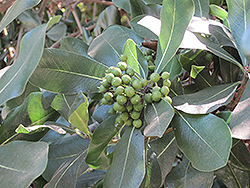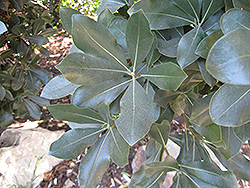It's all about ...
plants

Height: 50 feet
Spread: 30 feet
Sunlight:
![]()
![]()
Hardiness Zone: 8b
Other Names: Cape Pittosporum
Description:
A large evergreen shrub or tree with a dense multi-stemmed habit and deep green glossy foliage; small clusters of greenish-white flowers in early summer followed by yellow-brown capsules with orange-red seeds; a shining landscape accent or screen
Ornamental Features
Cape Cheesewood features showy clusters of fragrant creamy white star-shaped flowers with green overtones and gold eyes at the ends of the branches in early summer. It has attractive dark green evergreen foliage. The large glossy oval leaves are highly ornamental and remain dark green throughout the winter. It features abundant showy yellow capsules in early fall. The fruit can be messy if allowed to drop on the lawn or walkways, and may require occasional clean-up.
Landscape Attributes
Cape Cheesewood is a dense multi-stemmed evergreen tree with an upright spreading habit of growth. Its relatively fine texture sets it apart from other landscape plants with less refined foliage.
This tree will require occasional maintenance and upkeep, and can be pruned at anytime. It has no significant negative characteristics.
Cape Cheesewood is recommended for the following landscape applications;
- Accent
- Shade
- Mass Planting
- Hedges/Screening
Planting & Growing
Cape Cheesewood will grow to be about 50 feet tall at maturity, with a spread of 30 feet. It has a low canopy, and should not be planted underneath power lines. It grows at a fast rate, and under ideal conditions can be expected to live for 40 years or more.
This tree does best in full sun to partial shade. It is very adaptable to both dry and moist growing conditions, but will not tolerate any standing water. It is not particular as to soil type or pH, and is able to handle environmental salt. It is somewhat tolerant of urban pollution. Consider applying a thick mulch around the root zone in winter to protect it in exposed locations or colder microclimates. This species is not originally from North America.
This plant is not reliably hardy in our region, and certain restrictions may apply; contact the store for more information.

